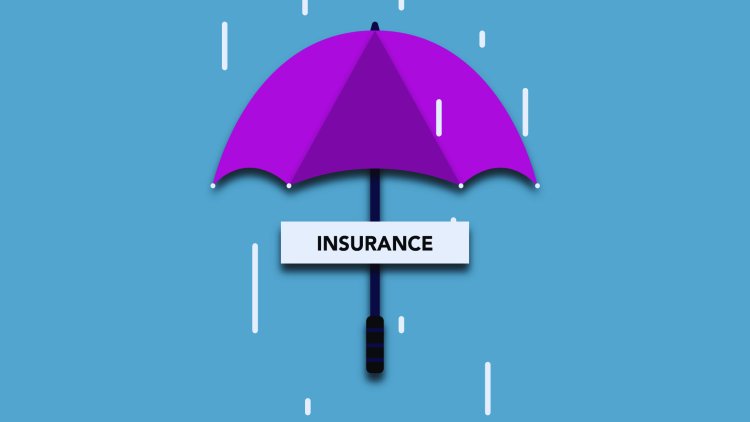Short-Term vs. Long-Term Disability Insurance: What’s the Difference?
Before making a decision, it’s advisable to assess your financial situation, consult with a financial advisor or insurance specialist, and carefully review the terms of any policy you’re considering. By understanding the differences between these two types of disability insurance, you can make a choice that best meets your needs and protects your financial well-being.
Share this Post to earn Money ( Upto ₹100 per 1000 Views )

Disability insurance is a crucial safety net designed to provide financial support if you’re unable to work due to a disability or illness. However, not all disability insurance policies are created equal. Understanding the difference between short-term and long-term disability insurance is vital for choosing the right coverage for your needs. This article will break down both options, highlighting their features, benefits, and drawbacks to help you make an informed decision.
What is Short-Term Disability Insurance?
Short-term disability insurance (STD) is designed to replace a portion of your income for a limited time—usually ranging from a few weeks to six months—if you’re unable to work due to a medical condition. This type of insurance is typically offered by employers but can also be purchased privately.
Key Features of Short-Term Disability Insurance:
- Coverage Duration: STD policies generally cover you for a short period, often up to six months, depending on the plan.
- Income Replacement: Short-term disability insurance usually pays out a percentage of your income (often around 60-70%) during the disability period.
- Quick Payout: Benefits often begin shortly after a waiting period, which can be as short as a week.
Pros of Short-Term Disability Insurance:
- Immediate Financial Relief: With quick payout timelines, STD can help cover immediate expenses, such as rent and bills, while you recover.
- Affordable Premiums: Short-term disability insurance typically has lower premiums compared to long-term options, making it an affordable choice for many.
- Easy Access: Many employers offer STD as part of their employee benefits package, making it accessible to workers.
Cons of Short-Term Disability Insurance:
- Limited Duration: Coverage is temporary and may not provide sufficient support for long-term disabilities or chronic illnesses.
- Income Cap: The percentage of income replaced may not cover all your living expenses, depending on your financial situation.
What is Long-Term Disability Insurance?
Long-term disability insurance (LTD) offers coverage for an extended period, often until retirement age or until you can return to work. This type of insurance is essential for individuals who may face a long recovery from illness or injury.
Key Features of Long-Term Disability Insurance:
- Coverage Duration: LTD policies can provide benefits for several years or even until retirement, depending on the specific policy.
- Income Replacement: Like STD, long-term policies typically pay a percentage of your income, often around 50-70%.
- Varied Definition of Disability: Policies can have different definitions of what constitutes a disability, affecting eligibility for benefits.
Pros of Long-Term Disability Insurance:
- Extended Coverage: Long-term disability insurance can provide financial support for years, offering peace of mind in case of severe or prolonged disabilities.
- Higher Benefits: LTD typically replaces a larger portion of your income over an extended period, helping you maintain your standard of living.
- Comprehensive Protection: Many policies cover various disabilities, including chronic conditions and mental health issues.
Cons of Long-Term Disability Insurance:
- Higher Premiums: The cost of long-term disability insurance is generally higher than short-term plans, which may be a consideration for budget-conscious individuals.
- Waiting Period: LTD policies often have longer waiting periods (sometimes 90 days or more) before benefits kick in, making it less ideal for immediate financial needs.
- Complexity: Long-term policies can be more complex and may require a thorough understanding of definitions and exclusions.
Key Differences Between Short-Term and Long-Term Disability Insurance
| Feature | Short-Term Disability Insurance | Long-Term Disability Insurance |
|---|---|---|
| Coverage Duration | Up to 6 months | Several years or until retirement |
| Premiums | Generally lower | Generally higher |
| Waiting Period | Short (1 week to 30 days) | Longer (90 days or more) |
| Income Replacement | 60-70% of income | 50-70% of income |
| Ideal For | Temporary disabilities | Prolonged or permanent disabilities |
When to Consider Short-Term Disability Insurance
Ideal for:
- Temporary Health Issues: If you’re concerned about short-term health issues (like surgery recovery or a temporary disability), STD insurance may be the right choice.
- Immediate Financial Needs: If you need quick financial support during a short recovery period, STD offers immediate relief.
When to Consider Long-Term Disability Insurance
Ideal for:
- Long-Term Protection: If you’re worried about the possibility of a long-term or permanent disability, LTD insurance provides crucial ongoing financial support.
- Comprehensive Coverage Needs: For individuals with higher income or substantial financial responsibilities, long-term disability insurance offers more extended coverage and a higher benefit payout.
Conclusion
Choosing between short-term and long-term disability insurance ultimately depends on your individual circumstances, health history, and financial goals. Short-term disability insurance can provide quick financial relief for temporary situations, while long-term disability insurance is essential for safeguarding your financial future against prolonged illnesses or injuries.
Before making a decision, it’s advisable to assess your financial situation, consult with a financial advisor or insurance specialist, and carefully review the terms of any policy you’re considering. By understanding the differences between these two types of disability insurance, you can make a choice that best meets your needs and protects your financial well-being.















